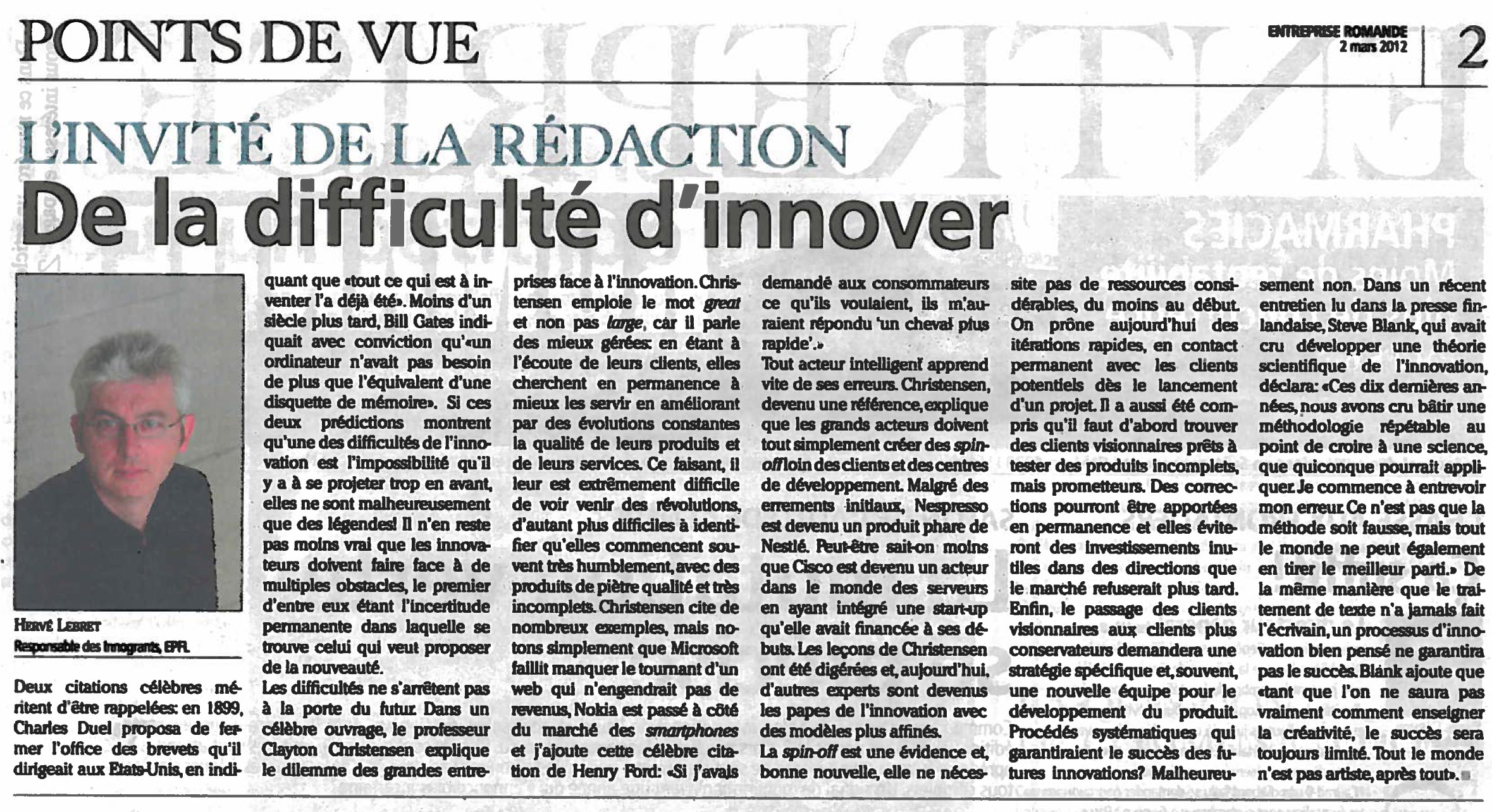Entreprise Romande asked me to write a short article about Innovation. It was published on March 2, here is my quick (and dirty) translation
Two famous quotes are worth recalling: in 1899, Charles Duel proposed to close the patent office he headed the U.S. stating that “everything that has to be invented has already been.” Less than a century later, Bill Gates stated with conviction that “a computer did not need the equivalent of more than a memory disk.”If these two predictions show that the difficulties of innovation are linked to the difficulty in predicting the future too far, they are unfortunately only legends! It remains no less true that innovators face many obstacles, the first of them being the permanent uncertainty in which swims the one who wants to offer something new.
The difficulties do not stop at the door of the future. In a famous book, Professor Clayton Christensen explains the dilemma of large companies toward innovation. Christensen uses the term Great and not Large because he speaks of the best managed corporations: by being attentive to their customers, they constantly seek to serve them better by improving the constant changes in the quality of their products and services. In doing so, it is extremely difficult to see coming revolutions, all the more difficult to identify that they often start very humbly, with products of inferior quality and very incomplete. Christensen cites numerous examples, but simply note that Microsoft almost missed the turn to a web that did not generate income, Nokia has missed the market for smart phones and I remind you this famous quote by Henry Ford: “If I had asked consumers what they wanted, they would have said a faster horse.”
Any smart player quickly learns from those mistakes. Christensen, who has become an icon in innovation, explains that the major players must simply create spin-offs away from customers and development centers. Despite some initial mistakes, Nespresso has become a flagship product of Nestle. Perhaps less known is the fact that Cisco has become a major player in the world of servers thanks to a start-up it had funded in its infancy and then acquired. The lessons were digested; Christensen and other experts today have become popes of innovation with more refined models
The spin-off concept is nowadays obvious, and good news, there is no need for significant resources, at least initially. Experts advocate rapid iterations in constant contact with potential customers, from the start of a project. It was also understood that one must first find customers willing to test visionary products, even promising but incomplete. Adjustments can be made continuously and avoid unnecessary investments in directions that the market would refuse later. Finally, the transition for visionary customers to more conservative customers will require a specific strategy and often a new team for product development. Systematic procedures that would ensure the success of future innovations? Unfortunately not. In a recent interview to the Finnish press, Steve Blank who believed he had developed a scientific theory of innovation said, ” Over the last decade we assumed that once we found repeatable methodologies (Agile and Customer Development, Business Model Design) to build early stage ventures, entrepreneurship would become a “science,” and anyone could do it. I’m beginning to suspect this assumption may be wrong. It’s not that the tools are wrong. Where I think we have gone wrong is the belief that anyone can use these tools equally well.” In the same way that word processing has never replaced a writer, a thoughtful innovation process will not guarantee success. Blank added that ” until we truly understand how to teach creativity, their numbers are limited. Not everyone is an artist, after all.”

